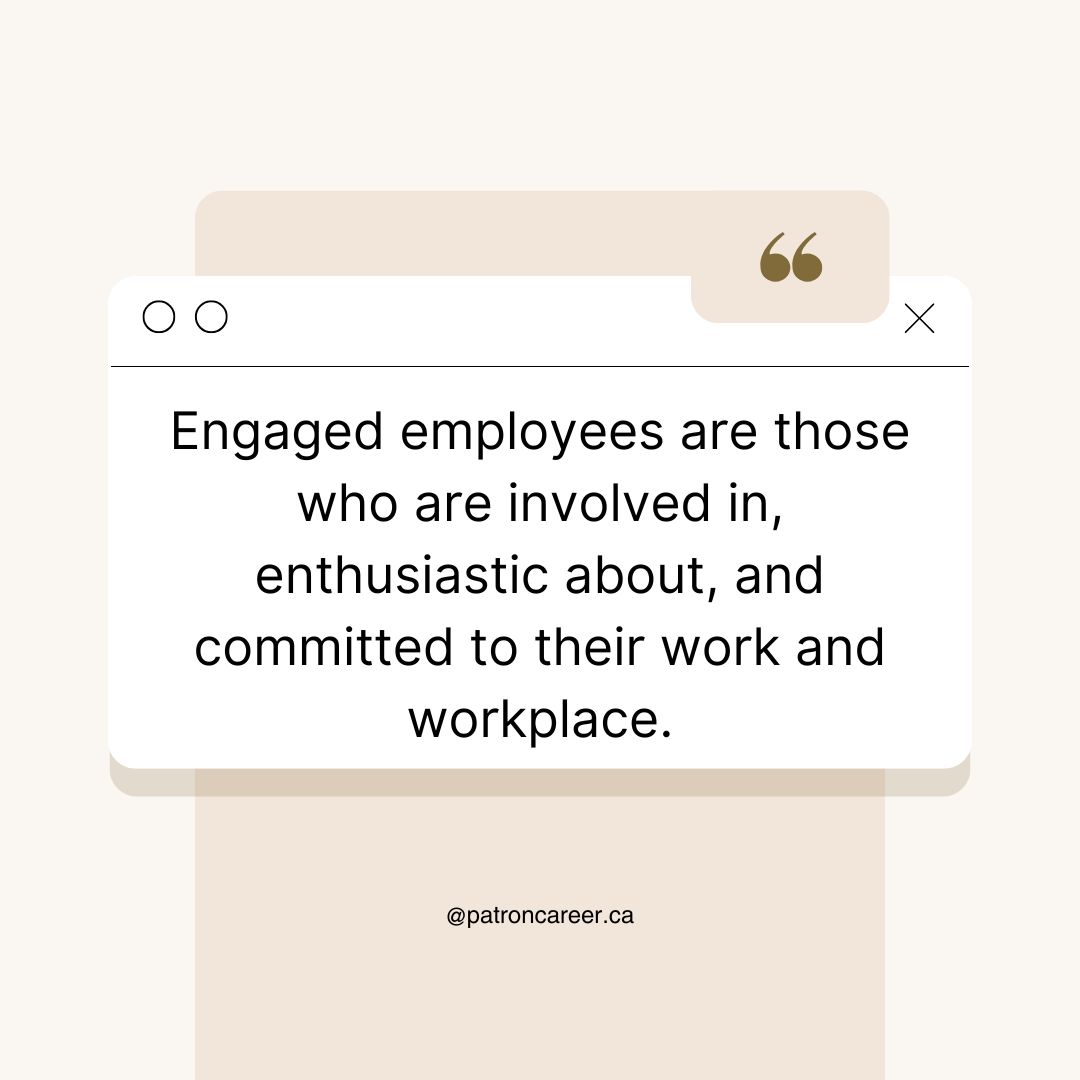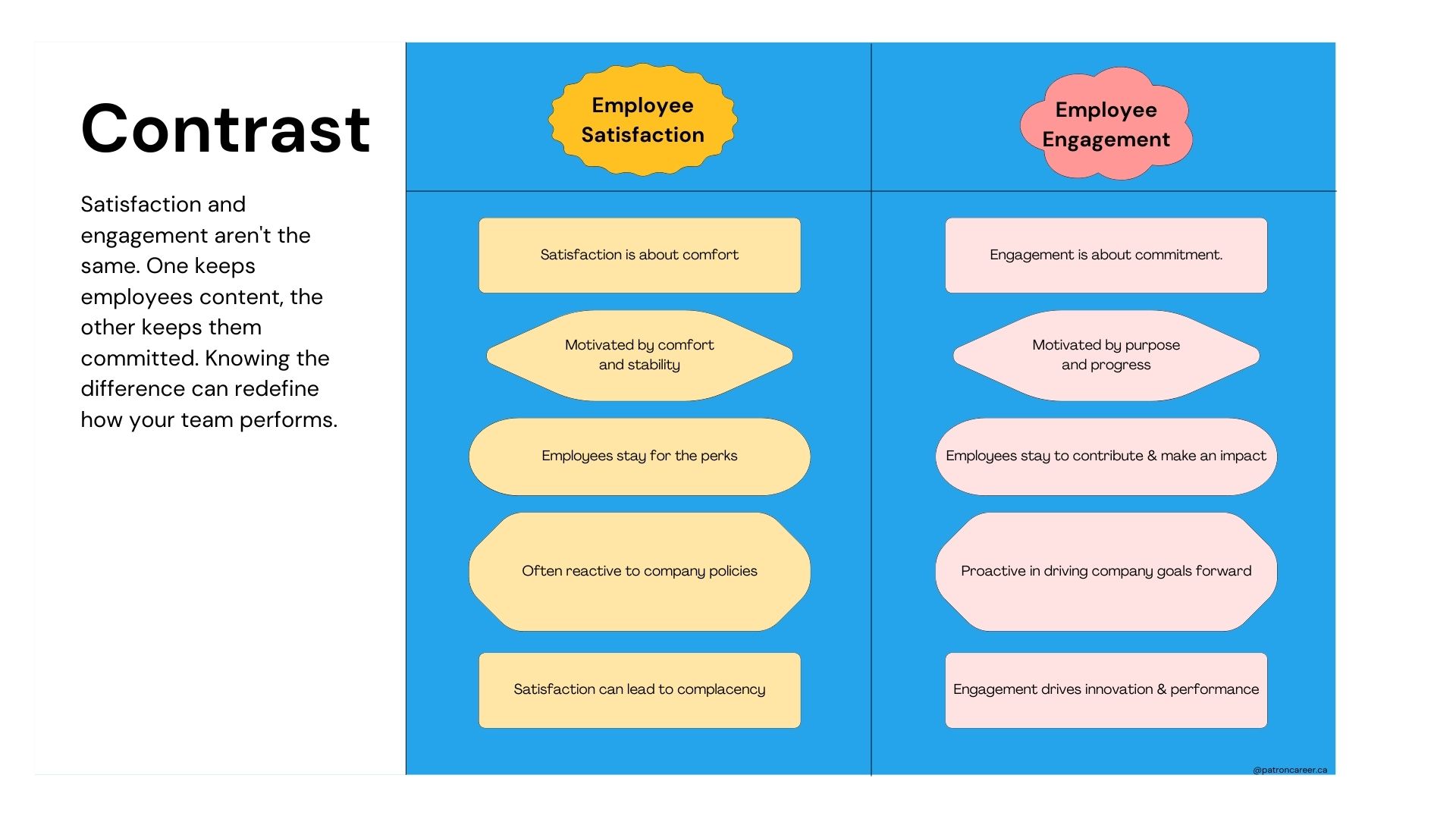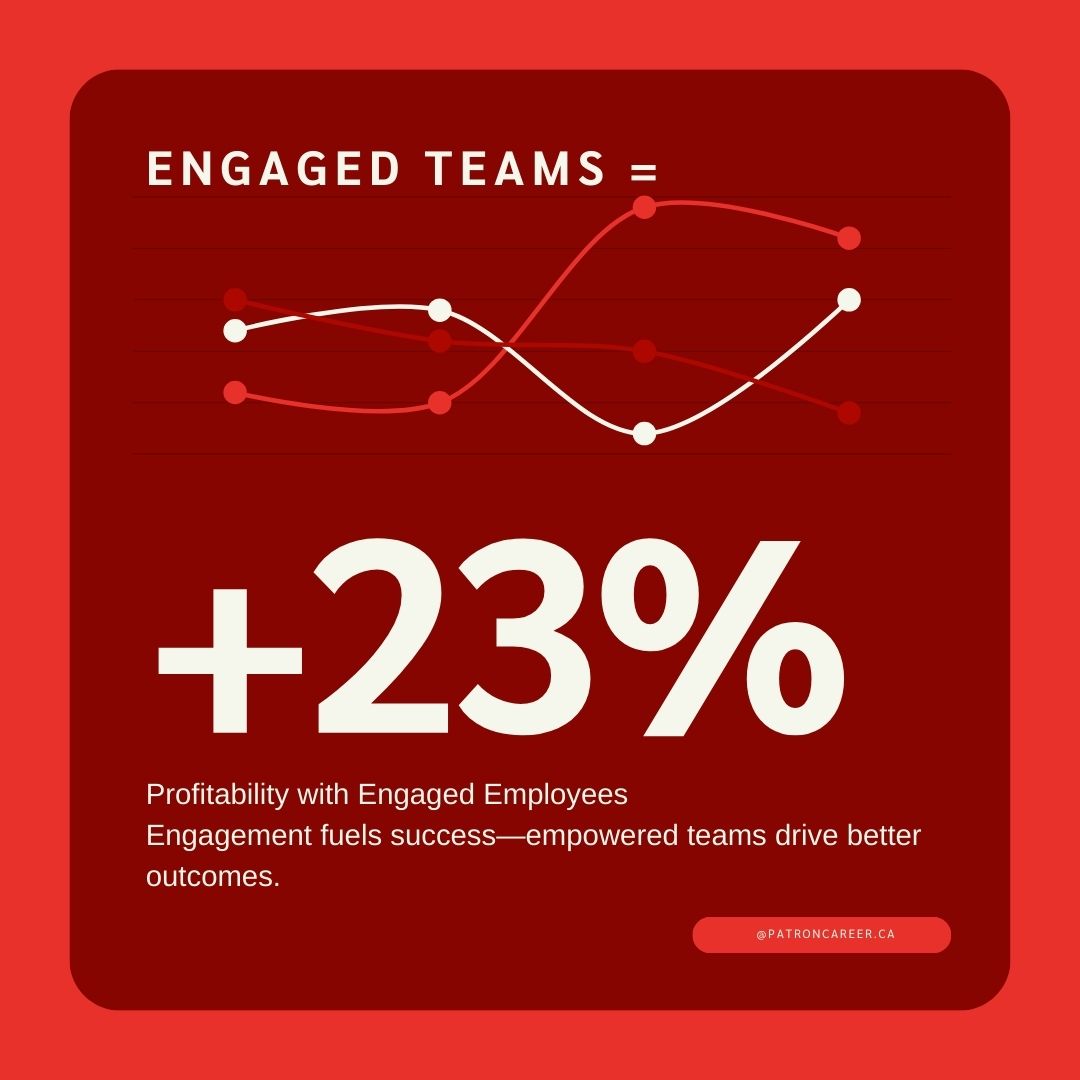Employee Satisfaction Vs. Employee Engagement: Exploring the Difference and Why It Matters
Building an agile workplace takes more work than just competing for customers with employees who surely know how to win customers—the war for talent now has companies on pins and needles. The ultimate assets of an organization, that is to say, the people, are the human variable that must be catered to, to secure the future of the company and achieve the underlying goals of engagement.
In the workplace context, two phrases are always in with the crowd: Employee Satisfaction and Employee Engagement. They are often considered along the same lines, but remember that they are not the same. Today’s hyper-competitive job market requires organizations to get familiar with the differences that these buzzwords have and to unlock a high-performing and resilient workforce.
In this blog, we unpack both concepts, compare them side by side, and explore how businesses can optimize both for long-term success.
Explaining the Definitions
Many organizations falter in retaining employees, mostly because they are indifferent to the relationship between employee satisfaction and employee engagement. Let us break it down for you:
What is Employee Satisfaction?
Are you looking for the ultimate metric to gauge how content or happy your employees are with their jobs and workplace conditions? Then look no more because keeping a check on employee satisfaction is the solution. It mostly reflects whether basic needs of employees, such as salary, work-life balance, benefits and job security, are being met without fail.
Think of it as:
“I'm satisfied because I get paid well, I like my coworkers, and I’m not overburdened with work.”
But for every blooming buzzword, there’s a downside. Not all satisfied employees can necessarily be termed ‘highly productive’. Satisfaction is just one of the many factors impacting employee engagement. Your employees might be content, but still not be going above and beyond.
What is Employee Engagement?
Employee engagement, on the other hand, is the sum total of emotional commitment, passion, purpose and enthusiasm your employees bring to their roles. They are not just into the job, but are highly invested in the company’s mission and are motivated to help it succeed.
As Gallup defines it:
So, engaged employees are inspired, show up early, brainstorm new ideas, help their teammates and care about what they bring to the table.
Why It Matters
Companies that comprehend employee satisfaction and employee engagement as just HR jargon often end up undervaluing the full effects and how they can boost company success. In the current HR landscape, they are the strategic imperative to attract, hire and retain top talent. But solely relying on employee satisfaction while overlooking the deeper drivers of performance, morale, and retention can be a disaster waiting to happen. To avoid the likelihood of employees straying, prioritizing a blend of satisfaction and engagement is necessary.
Did you know that only 23% of employees worldwide are engaged? Gallup research in 2023 found that a staggering 59% of employees are “not engaged”, and 18% are “actively disengaged”.
That brings us to conclude that companies with higher engagement incur 21% higher profit margins, 17% higher productivity, and 41% less absenteeism. If you aim for your company to reach the pinnacle of success, creating a balance of satisfaction and engagement can be the ultimate difference.
Key Differences Between Satisfaction and Engagement
How does employee engagement differ from job satisfaction? Let's find out:
Can You Have One Without the Other?
Absolutely—and that’s the problem.
- Companies can have satisfaction without engagement: Your employees enjoy a 9-5, collect a monthly salary, and go home. But they don’t go the extra mile or put hard work into most tasks.
- Companies can have engagement without satisfaction: An employee is invested in his role, but at the cost of high stress, being underpaid or feeling stuck.
It's high time companies stop treating satisfaction and engagement as tantamount metrics. The goal should be to maintain a balance so you get the best of both worlds. Satisfied employees stay. Engaged employees perform. Combined? That’s where the magic happens.
Also Read: Creating a Positive Work Environment in 7 Simple Steps
Ways to Improve Employee Satisfaction
Read on to understand the key drivers of boosting satisfaction:
1. Fair Compensation
If you want to increase employee satisfaction, give them competitive compensation. Regular benchmarking and a transparent salary structure help build trust and camaraderie.
2. Work-Life Balance
Are employees feeling stressed and depleted of productivity? Chances are, they are experiencing burnout. Encourage boundaries, foster social engagement, and provide flexible work options to prevent employees from feeling overwhelmed.
3. Recognition and Appreciation
All employees deserve to be acknowledged for their work. Well done. Go the extra mile and thank your employees in any of these 8 creative methods.
4. Safe and Inclusive Culture
Your work culture speaks volumes about how the employees feel seen, heard, safe and included- both psychologically and physically.
Related: A Take on Unlocking and Building a Diverse Workplace
How to Drive Employee Engagement?
Making a collective effort to increase engagement in your workforce is indeed an investment in your company’s future.
1. Connect Roles to Purpose
Employees should know how their work contributes to the bigger picture. Ensure to give them a purpose to fuel their passion.
2. Foster Growth Opportunities
Provide cross-functional training, skill enhancement workshops, job shadowing, and seminars to mindfully enhance their skills and knowledge.
3. Empower Through Autonomy
Micromanagement kills engagement and erodes trust. Trust your team, give them ownership, and let them innovate.
4. Listen and Act on Feedback
Want an engaged workforce? Listen with full attention and involve everyone in discussions—and do something with the input.
The Manager’s Role: The Engagement- Satisfaction Bridge
The crucial role that managers play in the workplace trade-off can’t be overlooked. Managers make or break this equation.
Remember, people don’t leave bad jobs, they leave bad managers. A great manager fosters a work culture where satisfaction is the foundation and engagement is the outcome.
They assist in:
- Setting clear expectations
- Provide constructive feedback
- Celebrate wins
- Develop trust
- Encourage upward mobility
The takeaway: invest in your managers because they are your cultural carriers.
What You Need to Do? Don’t Choose One— Foster Both
Employee satisfaction is about staying, while employee engagement is about striving. When satisfaction aligns with engagement, you build teams that are loyal, ardent and ready to grow with you.
At the heart of it, a satisfied employee likes their job. An engaged employee loves it. Put your employees front and centre to build a workplace that doesn’t just work, but also thrives abundantly.







